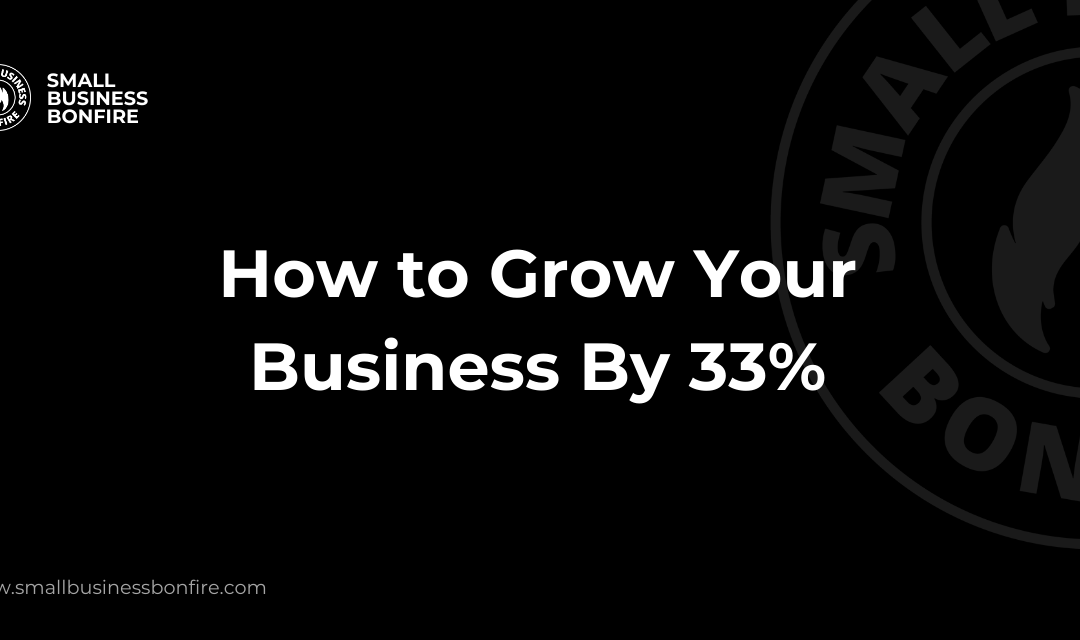You might be wondering how exactly you can attain such groundbreaking growth.
The path to increasing your business by 33% is filled with actionable strategies, innovative approaches, and untapped potential just waiting to be explored.
Ready?
Increase Your Prices by 10%
You can approach this tactic in a few ways to suit your business model and customer base best:
- Yearly Price Increases for Existing Customers: Implementing a systematic annual increase for your existing customers can be a practical method to boost revenue. Pro Tip: Bake this into your contracts.
- Increase the Price by 10% for New Customers: Alternatively, you can opt to increase the price of your products or services by 10% for new customers. This strategy enables you to test the market’s response to your pricing and adjust accordingly.
Example:
Imagine a business coach:
The business, which offers professional development workshops, currently charges $200 per participant. With an average attendance of 50 participants per workshop, the revenue per session is $10,000 ($200 * 50).
By implementing a 10% price increase, the charge per participant would rise to $220 ($200 + $20). Assuming the attendance remains constant at 50 participants, the new revenue per workshop would be $11,000 ($220 * 50).
If most people were willing to pay $200, they wouldn’t blink an eye at $220. Wouldn’t you?
Get 10% More Customers
Acquiring 10% more customers is a critical step toward achieving your goal of 33% growth.
This task can be approached through three main strategies: Referrals, Outbound Selling, and Inbound Marketing.
Each strategy requires a tailored approach and presents unique growth opportunities.
Here’s how to get started with each:
Referrals:
Referral Programs: Encourage your existing customers to refer new customers by offering incentives for the referee and the referrer.
Easy Start: Create a simple referral form and email it to your current customers, explaining the benefits for them and the person they refer.
Outbound Selling:
Cold Emailing and Calling: Reach out to potential customers who fit your ideal customer profile but are not currently in your network.
Easy Start: Identify 10 potential businesses each week and send personalized emails or make calls introducing your offering.
Social Selling: Leverage social media platforms to engage with potential customers and showcase your products or services.
Easy Start: Start building your brand on LinkedIn by writing great content (daily). From there, connect with your target audience and strike up great conversations.
Inbound Marketing
There are TONS of ways to do inbound marketing.
If you’re not currently doing inbound marketing, get started.
If you are doing some of these methods, expand into others.
SEO: Optimize your website to rank higher on search engine results, making it easier for potential customers to find you.
Easy Start: Include relevant keywords in your website’s titles, headers, and content.
AdWords: Google AdWords allows you to skip the line and pay for placement at the top of Google’s SERPs (search engine results pages).
Easy Start: Start with a small budget ($500/month) to test different keywords and ad copy to see what brings the best results.
Email Newsletter: Keep your customers engaged and informed by regularly sending out an email newsletter with updates, offers, and useful information.
Easy Start: Set up an opt-in form on your website. From there, write a weekly email newsletter in your niche.
Organic Social: Leverage social media platforms to build relationships and communicate with your audience without paid advertising.
Easy Start: Choose one social media platform where your target audience is most active and post valuable content daily.
All of these are easy to say and hard to do. Get started today.
Increase Buying Frequency by 10%
Encouraging customers to buy more often boosts sales and deepens customer loyalty and engagement.
Here are some practical ways to encourage customers to make purchases more frequently:
Upselling:
Offer customers an upgraded or premium version of the product they’re interested in at the point of sale.
Example: If you’re a business coach, offer a 1/2-hour and a 1-hour time slot.
Cross-Selling:
Recommend related products or services that complement the customer’s original purchase.
Example: Using the coaching example, let’s say you offer coaching around social media growth and social selling. Start offering social templates.









